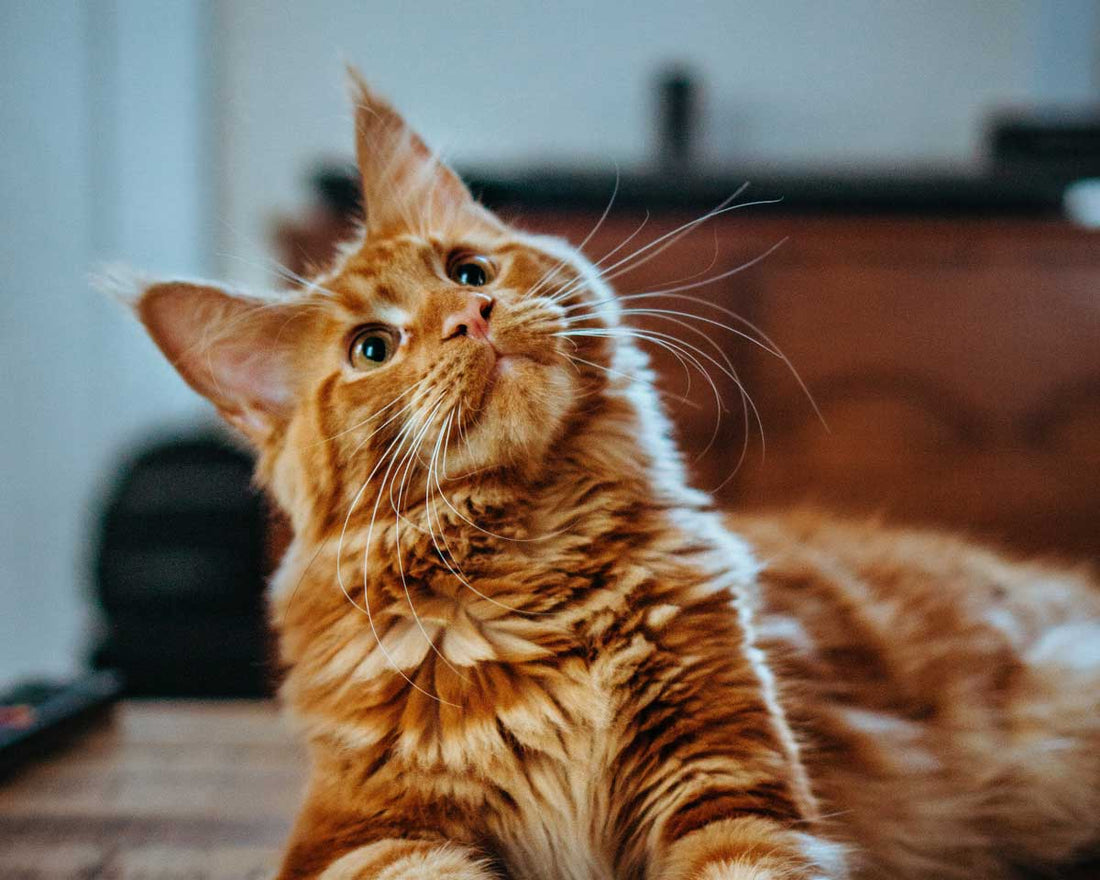I don’t know how many times I have received phone calls at the hospital with frantic pet owners seeking advice after finding blood in the litter box or seeing their pet straining to urinate.
Urinary blockage in dogs and cats can be a distressing and potentially life-threatening condition that veterinary professionals take special care to educate the public about. It occurs when a part of the urinary tract, typically within the bladder or urethra, becomes obstructed, preventing the normal flow of urine.
Today we will delve into the causes, symptoms, diagnosis, treatments, and prevention methods for urinary blockage in both dogs and cats!
Causes of Urinary Blockage in Cats
Urinary Crystals
Urinary crystals are small, solid particles that can form within a cat's urinary tract. There are several types of crystals, but the most common ones in feline urinary problems are struvite and calcium oxalate crystals.

Struvite crystals; image via Affordable Pet Care at Four Corners
-
Struvite crystals are composed of magnesium ammonium phosphate. They tend to form in alkaline urine, which is more common in cats that consume dry kibble diets. When the pH of a cat's urine becomes too high (alkaline), it creates an environment where struvite crystals can develop.
-
Calcium oxalate crystals are formed from calcium and oxalate. These crystals are more likely to form in acidic urine, which is common in cats that eat high-quality, protein-rich diets. Unlike struvite crystals, calcium oxalate crystals do not dissolve as easily in the urine, making them more likely to lead to blockages.
What Contributes to Urinary Crystals?
Dehydration
Dehydration is a significant contributor to the formation of urinary crystals and blockages, especially in our feline friends. When a cat is not drinking enough water, their urine becomes concentrated, making it easier for crystals to form. Cats that primarily consume dry cat food may be at a higher risk of dehydration, as dry kibble contains very little moisture.
Many veterinary nutritionists recommend adding moisture to your cat's diet. Many owners opt to feed moisture-rich wet food or add water right to their cat's dry kibble.
Another easy way to stimulate your cat to drink more water on their own is to introduce a fountain into the home. Cats do not have a strong natural thirst drive, but running water can be great way to entice them to take more stops towards the watering hole.
Not only do cats love the sound of running water, it also makes them feel safer to drink from a source that is constantly flowing. Flowing water is much cleaner in nature, and their ancestors relied on those instincts for survival.
There are tons of fountains to choose from for your pets. Here is one by Apetdola that I’ve tried for the last several months, and both my cats and my dog really love it! I have noticed a huge increase in my pets’ drinking since bringing a fountain into the home.

Apetdola Wireless Fountain for Dogs and Cats, on Amazon
Stress
Stress can also play a role in the development of urinary blockages. Stress can lead to changes in a cat's behavior, causing them to hold their urine for extended periods.
This can result in concentrated urine, increasing the risk of crystal formation. Some feline patients are seen when owners come back from trips or right after the holidays when there has been more disruption in their normal routine.
If you have an especially shy or nervous cat, you can try to offset this by shutting them in the same room with their food, water, and litter box. They have a safe and quiet environment which can reduce stress.
If you have a pet sitter during vacations, try to get the same person each time. Your cat will become more and more familiar with them and reduce the stress of a new caregiver each time. Treats never hurt either!
If you have a particularly stressed pet, you can try introducing a pheromone diffuser into their space. Feliway makes several pheromone products to aid in stress reduction which can be purchased at most pet stores.
Symptoms of Urinary Blockage in Cats and Dogs
Recognizing the symptoms of urinary blockage in cats is crucial because early intervention can be a matter of life and death for your furry friend. Common signs of urinary blockage include:
-
Frequent Attempts to Urinate: Cats with a blockage will often strain to urinate but produce only a few drops or nothing at all. They may make repeated trips to the litter box without success.
Dogs will be asking to go potty more and more frequently as the urgency grows with little to no success when attempting to urinate.
-
Pain and Vocalization: Cats experiencing urinary blockage are in significant discomfort. They may vocalize their pain, yowling, crying, or hissing when trying to urinate. Dogs may pace or whine as their discomfort grows.
-
Licking the Genital Area: Cats and dogs with urinary blockages may excessively groom their genital area. This behavior is an attempt to alleviate discomfort.
-
Blood in Urine: Bloody urine is a concerning sign and can be an indicator of a urinary blockage. Hematuria is a result of irritation and inflammation in the urinary tract.
Many times, dog owners bring their pet in after they have had multiple accidents in the home where blood was present in the urine. This is a tell-tale sign of bladder stones.

X-ray of Calcium Oxalate Urolithiasis; via Clinicians Brief
Diagnosis of Urinary Blockage
Diagnosing urinary blockage typically involves a combination of physical examination and diagnostic tests, which include:
-
Physical Examination: A veterinarian will perform a physical examination, palpating the abdomen to check for an enlarged or tight bladder. This indicates that the bladder is completely blocked and is cause for alarm. The bladder must be relieved immediately to reduce risk of rupture.
-
Urinalysis: A urinalysis is a crucial diagnostic tool that can reveal the presence of urinary crystals, blood in the urine, and the pH of the urine.
-
X-rays or Ultrasound: Imaging studies such as X-rays or ultrasound can help identify the presence of a blockage, stones, or anatomical abnormalities within the urinary tract. In the image below, stones can be visualized within the urethra blocking the exit route for urine.
-
Blood Tests: Blood tests may be conducted to assess kidney function, as urinary blockages can lead to kidney damage if not addressed properly or under control.
Treatment of Urinary Blockage
Medical Intervention
Once diagnosed, the primary goal is to “unblock” your pet. Typically, this involves urinary catheterization where a catheter (a tiny medical tube) is inserted through the urethral opening and up into the bladder.
If the blockage is within the urethra, fluid will be flushed through the catheter in attempt to “push” the stones back up into the bladder. Cats typically have a temporary catheterization for 24-48 hours in order to keep the urethral opening clear as intravenous fluids are administered.
This “flushing” of the system helps to clear crystals in the bladder and clear the kidneys. Pain medication is administered as well to reduce discomfort and inflammation. In severe cases, such as a blockage that cannot be removed, or if stones are common in your pet, surgery may be the best option.

Dietary Changes
Dietary management is essential to preventing the recurrence of urinary blockage. This may involve transitioning to a specialized prescription diet designed to dissolve struvite crystals or prevent the formation of calcium oxalate crystals.
Home Modification
Like I said before, dehydration can be a contributing factor, so introducing more water to your pet can be extremely helpful.
Additionally, it is important to make sure their litter box area is up to par. You should have one litter box per cat, plus an additional litter box. So, if you have one cat, they need two litter boxes in the home. This is especially important if you have a multi-level home. I recommend that owners have a litter box for every floor.
Keeping the boxes scooped daily is also very important. Cats like a clean and well-maintained bathroom - just like we do! And, if it isn’t up to standard, they will hold their waste or go elsewhere. This is stressful for cats and contributes to more behavioral issues.
Conclusion
Urinary blockage in cats is a serious condition that can have life-threatening consequences if left untreated. Understanding the causes, symptoms, diagnosis, treatment options, and prevention methods is crucial for owners.
By taking proactive measures, including maintaining proper hydration, having a balanced diet, and providing a stress-free environment, you can help ensure your companion enjoys a healthy and blockage-free life.
If you suspect your pet may be suffering from urinary blockage, don't hesitate to seek immediate veterinary care, as early intervention is key to a successful outcome!

